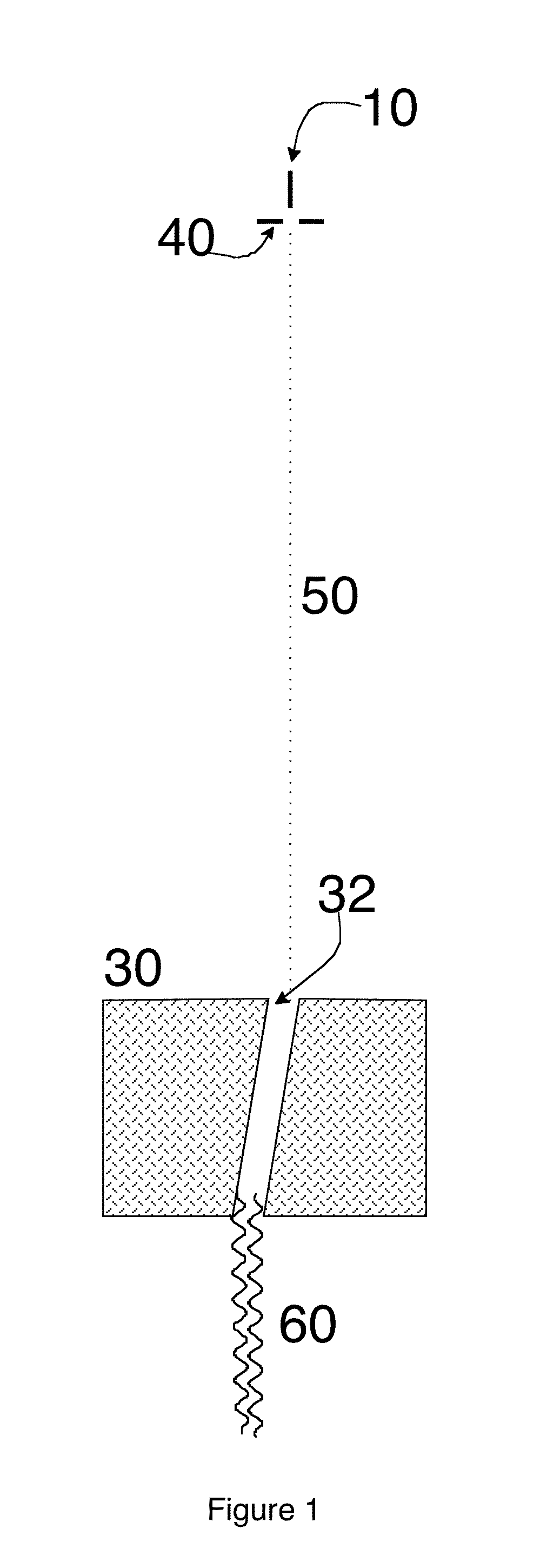Forward Flux Channel X-ray Source
a forward flux and x-ray source technology, applied in the field of radiation sources, can solve the problems of inherently limited heat dissipation of thin films, limited power output and efficiency of x-ray tubes with an angled reflective anode target, and often limited system speed and scope, so as to improve the conversion efficiency of electrons, reduce image acquisition times i x-ray imaging, and improve the effect of x-ray flux outpu
- Summary
- Abstract
- Description
- Claims
- Application Information
AI Technical Summary
Benefits of technology
Problems solved by technology
Method used
Image
Examples
Embodiment Construction
[0034]Although the following detailed description delineates specific attributes of the invention and describes specific designs and fabrication procedures, those skilled in the arts of radiographic imaging or radiation source production will realize that many variations and alterations in the fabrication details and the basic structures are possible without departing from the generality of the processes and structures.
[0035]The FFC x-ray source comprises at least a cathode and a metal anode with at least one hole (termed a channel) through the anode such that x-rays may be produced by e-beams accelerated by an electrical potential between cathode and anode to impact the upper portion of the inner wall of the channel, which may also be called the upper acceptance region. The channel will typically be annular, but other channel shapes may also be used. A small portion of the electrons (estimated at under 25%) will produce x-rays from this primary impact but most of the electrons will...
PUM
| Property | Measurement | Unit |
|---|---|---|
| voltages | aaaaa | aaaaa |
| diameter | aaaaa | aaaaa |
| angle | aaaaa | aaaaa |
Abstract
Description
Claims
Application Information
 Login to View More
Login to View More - R&D
- Intellectual Property
- Life Sciences
- Materials
- Tech Scout
- Unparalleled Data Quality
- Higher Quality Content
- 60% Fewer Hallucinations
Browse by: Latest US Patents, China's latest patents, Technical Efficacy Thesaurus, Application Domain, Technology Topic, Popular Technical Reports.
© 2025 PatSnap. All rights reserved.Legal|Privacy policy|Modern Slavery Act Transparency Statement|Sitemap|About US| Contact US: help@patsnap.com



